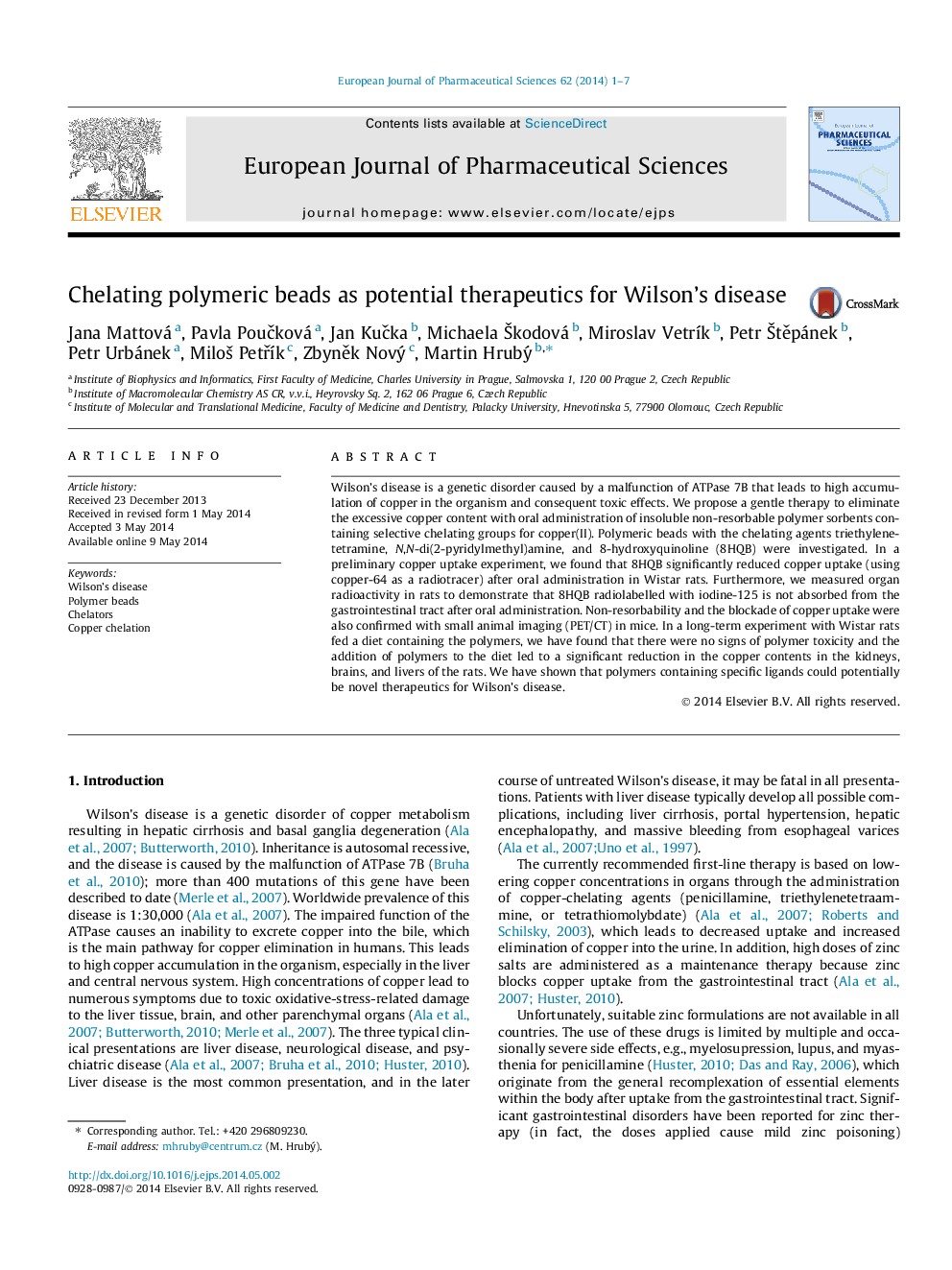| کد مقاله | کد نشریه | سال انتشار | مقاله انگلیسی | نسخه تمام متن |
|---|---|---|---|---|
| 2480378 | 1556188 | 2014 | 7 صفحه PDF | دانلود رایگان |
Wilson’s disease is a genetic disorder caused by a malfunction of ATPase 7B that leads to high accumulation of copper in the organism and consequent toxic effects. We propose a gentle therapy to eliminate the excessive copper content with oral administration of insoluble non-resorbable polymer sorbents containing selective chelating groups for copper(II). Polymeric beads with the chelating agents triethylenetetramine, N,N-di(2-pyridylmethyl)amine, and 8-hydroxyquinoline (8HQB) were investigated. In a preliminary copper uptake experiment, we found that 8HQB significantly reduced copper uptake (using copper-64 as a radiotracer) after oral administration in Wistar rats. Furthermore, we measured organ radioactivity in rats to demonstrate that 8HQB radiolabelled with iodine-125 is not absorbed from the gastrointestinal tract after oral administration. Non-resorbability and the blockade of copper uptake were also confirmed with small animal imaging (PET/CT) in mice. In a long-term experiment with Wistar rats fed a diet containing the polymers, we have found that there were no signs of polymer toxicity and the addition of polymers to the diet led to a significant reduction in the copper contents in the kidneys, brains, and livers of the rats. We have shown that polymers containing specific ligands could potentially be novel therapeutics for Wilson’s disease.
Figure optionsDownload high-quality image (43 K)Download as PowerPoint slide
Journal: European Journal of Pharmaceutical Sciences - Volume 62, 1 October 2014, Pages 1–7
